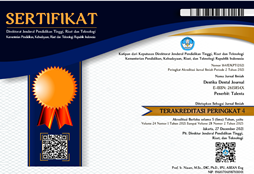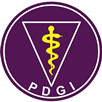BLEACHING KASUS DISKOLORASI TETRASIKLIN DERAJAT 3
BLEACHING OF THE THIRD DEGREE TETRACYCLINE DISCOLORATION
DOI:
https://doi.org/10.32734/dentika.v16i2.1867Keywords:
bleaching, tetracycline discoloration, carbamide peroxideAbstract
Tetracycline becomes one of intrinsic factors which causes tooth staining. Discoloration due to tetracycline is divided into 4 degrees of severity. Bleaching can be treated for the 1st or the 2nd degree. The 3rd and the 4th degree can not be treated but must be veneer. The 3rd and 4th degree are indicated by dark tooth color, and a ribbon-like picture showed in labial teeth. A 30 years female patient came to the Dental Clinic, dental examination found teeth color dark grayish yellow (C4 shade guide color) and in the central of labial there was a picture like white banded. Diagnosed of the case was the 3rd degree of discoloration. On the first visit, dental impression was performed for making bleaching tray. On the second visit, there was polished with pumice powder. Carbamide peroxide 10% as bleaching paste was applied to the labial bleaching tray, and inserted for 30 minutes. Once removed then patient gargled with warm water. Patients got instructions to do it at home twice a day for 2 weeks the result showed third. On the third visite the colour of the teeth look brighter, and there were no gingiva irritation and sensitive teeth. Patient was very satisfied. In conclusion, bleaching of the third degree tetracycline discoloration can make the teeth look brighte.
















